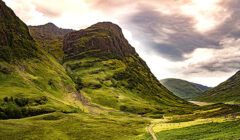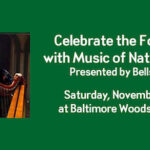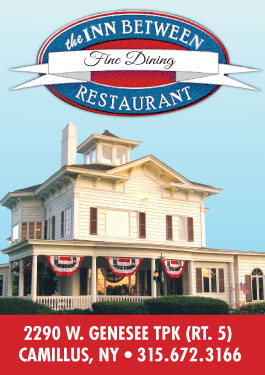Highlanders: Unlocking Identity Through History by James MacKillop
In Chapter 2 of MacKillop’s richly researched story of the Highlanders, he explores the origin of the Scottish name “Campbell.” Likely, he writes, it was not the “beautiful fields” of the possible French origin  – especially telling is the insertion of the silent ‘’p” – (Champ/Camp = fields, belle = beautiful), but the more flavorful “wry mouth” of the Gaelic (Cam = wry/crooked, beul = mouth). And that, in a simple sample case, is just one delightful moment from this deep and fascinating dive into a people about whom we know so little, fictionalize so readily, and understand so poorly.
– especially telling is the insertion of the silent ‘’p” – (Champ/Camp = fields, belle = beautiful), but the more flavorful “wry mouth” of the Gaelic (Cam = wry/crooked, beul = mouth). And that, in a simple sample case, is just one delightful moment from this deep and fascinating dive into a people about whom we know so little, fictionalize so readily, and understand so poorly.
Jim MacKillop is well known as a Central New York scholar and journalist who received his Ph.D. from Syracuse University and later taught there; taught at Onondaga Community College; wrote for the Syracuse New Times; and published ten books, dozens of scholarly articles, and thousands of newspaper articles. But those are far from a complete list of his stellar achievements. MacKillop taught for more than forty years at a number of universities, specializing in Celtic and Irish studies and arts journalism, held visiting professor or fellowships at a number of renowned places such as the University of Rennes in Brittany, and picked up a significant number of awards in his various fields.
This epic story of the Scottish Highlanders, MacKillop explained, was most of his life in the making. The child of Gaelic-speaking Cape Breton born parents, MacKillop recalls identifying with his Scottish Highland roots as a six-year-old, when he visited Nova Scotia and heard the music. Curiously, as I read this book, I started inserting a soundtrack in the margins, adding a reference to Runrig here, the album “Sons of Somerled” there, Mark Knopfler, Steve MacDonald, De Dannan, Capercaillie – some of my favorite derivative “Celtic” music, as well as traditional tunes like the Skye Boat Song and Flower of Scotland. But MacKillop referenced something a little more serious than our current fancy for the kilted hero of popular romance when he mentioned his father’s distaste for the Gaelic phrases he found all over Scotland on his first visit there. He explained that his father felt his Gaelic-speaking childhood was the source of many of his challenges in life; it betokened a lack of “sophistication” and a lowered station in life. MacKillop, son, made a career out of studying the language, and finding the richness of the cultural inheritance. The book, he now notes, was a way of coming to terms with the idea that both the brave and romantic, and the sad and impoverished sides of the story are true – and that it behooves the scattered children of the Highlands to remember that.
“I like the story of Calum’s Road,” MacKillop noted. “The identity maintained despite efforts to eradicate it.” Calum’s Road, he writes in the Coda of the book, is about a man named Malcolm MacLeod, a small farmer, assistant lighthouse keeper, and part-time postman. “(He) embodies and expresses the aspirations and ideals shared by a wide swath of people from the same ethnicity.” Taken from Glasgow to the island of Raasay as a child, as an adult Calum decided the small island needed a road. Unable to get local council support, he built it on his own – over a course of some ten years, using a shovel, pick and wheelbarrow. Now celebrated in song, MacKillop noted that Calum’s singular achievement was “not a victory and not a humiliation, not a rebellion and not a submission…He knew where he lived. Lacking economic and political sway, his tenacity gave him power over the world he inhabited…Paradoxically both proud and modest, he would have his way. Such a figure can excite Highlanders’ sense of their own identity.”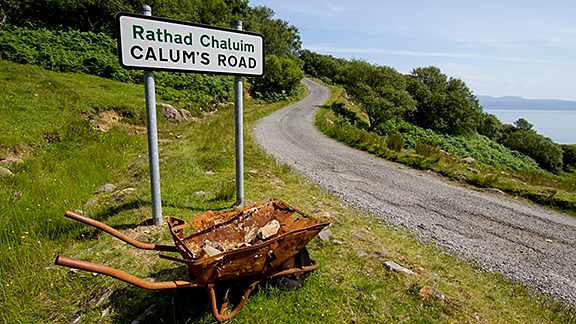
If this – the ability to come to terms with where, when, and how you are – is the deeper message of his book, the bulk of what MacKillop explores in six sections/chapters and the Coda is: who exactly ARE the Highlanders?
He begins in the “beginning,” the geography, pre-history and early history of this beautiful and brutal land, moving into the medieval highlands and islands, the seventeenth century and its flirtation with power, the rebellion and defeat of the eighteenth century, the “Romantic Amelioration” of the next century when writers, poets and a Queen and King adopted the bonnie banks and braes – once, of course, the poor tenant farmers had been “cleared” from the land – and finally the post-romantic phase which went on simultaneously with much of the kilted-hero worship, and continues on today, as internet-empowered investigation allows scholars both amateur and professional to examine who these Highland people were, how and why they lived and died, where they went in the Highland diaspora, what they left behind and what they took with them.
“Many of the people lived in so much poverty,” he told me, “so they sought famous and glorious ancestors.” What he discovered frequently was people like Calum, that had a kind of fame and glory, but a glory born out of the very poverty and hard circumstances he prevailed against. He referred me to the story of “Iain Lom – Bald John.” Not necessarily a nod to a bald pate, “bald,” MacKillop told me more likely referred to his “nature, not his head. He was a scathing wit, a great observer.” The cover of his book is an image of the marker erected in honor of the exploits of Bald John, both a poet and a dangerous foe, who, at the same time that he was writing poems that earned him the title of Poet Laureate, was also hunting down and defeating his enemies, dragging their heads along with him as a victory cry and a warning.
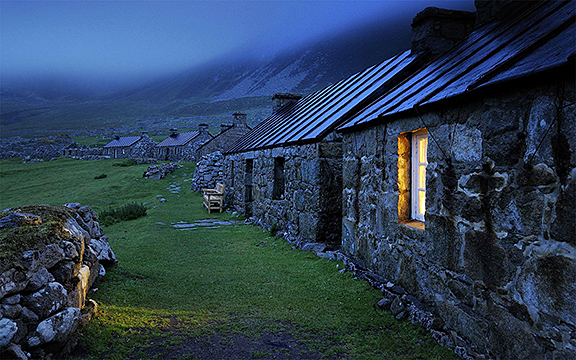
And of course, I had to inquire about the Celts – who were these mysterious and vagabond people? MacKillop, ever a true historian, noted that ethnicity only became a study in the 18th century, long after people had begun to travel widely. There had been a question about ethnicity and language, he explained, when the British conquered India and found that the people there spoke an “Indo-European language.” Was language a sign of ethnicity? In truth, he told me, there is no unique “Celtic” DNA. At the same time, he notes, if you were to visit Celtic monasteries, and then ride a camel across Egypt, away from the Nile to where the Coptic Christians lived, you will find a very similar architecture. And if you study the Book of Kells, a well-known Irish/Celtic work of monastic art, you will find many Coptic elements. As I stumbled over the implications, he finally gave me some insight: these people traveled. Boats are better transportation than foot – and a coastline that can be followed and fished from the middle east to the British Isles is a handy map for travelers.
MacKillop’s book has been the work of a lifetime. He explained that though his early studies in Irish history and the Gaelic language weren’t done with this tome in mind, everything he learned over a lifetime of scholarship in one way or another contributed to this fascinating volume. He said the work came to him as a project in approximately 2010, but his work as instructor at Newhouse, editor at SU Press, and articles for the New Times required his attention to the tune of about 60,000 words per year. Eventually, he was able to devote himself to it, and the result was the book now in my hands.
When asked about the popular romances (think Outlander) so prevalent in modern fiction, that feature a kilted hero and a time traveling heroine, he admits that searching Amazon for “Highlander” will turn up his book and dozens of bare-chested, kilt wearing romantic leads for “steamy” novels. When asked how he feels about most Americans being familiar with Robert the Bruce, William Wallace, Bonnie Prince Charlie and Flora MacDonald, but knowing nothing about the deeper story of Scottish Highlands, he laughed, and reminded us that if you go into an Irish bar, you’re going to hear about the famous poets and musicians and scholars of Ireland, or about the drunk, humorous, pugilist Irishman, not the people who risked it all to emigrate, or who were thrust from their homes when the potato crop failed. 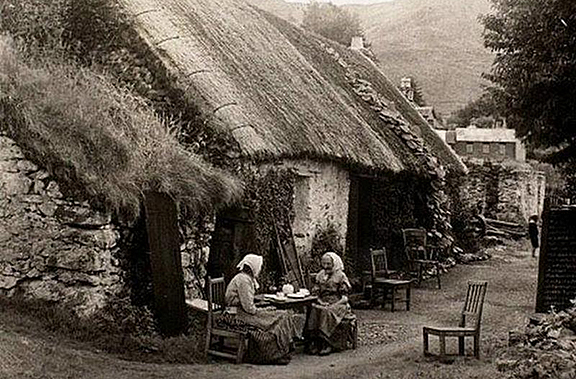
In this book you will find the story of all those Highlanders – the rich and the poor, the poets and the workmen, the clever and the clueless, the famous and the unknown. You might go seeking the story of your ancestors, and you might find a people as brave, and ordinary, and wonderful and plain as you could wish for. “No amount of cultural repression,” MacKillop told me, “defeat on the battlefield, discrimination, poverty, famine or forces immigration could grind the Highlanders down. Calum built his road by himself when no one else would.” And then he added, “Highlanders should be empathetic to all the other suffering peoples of the Earth.”

